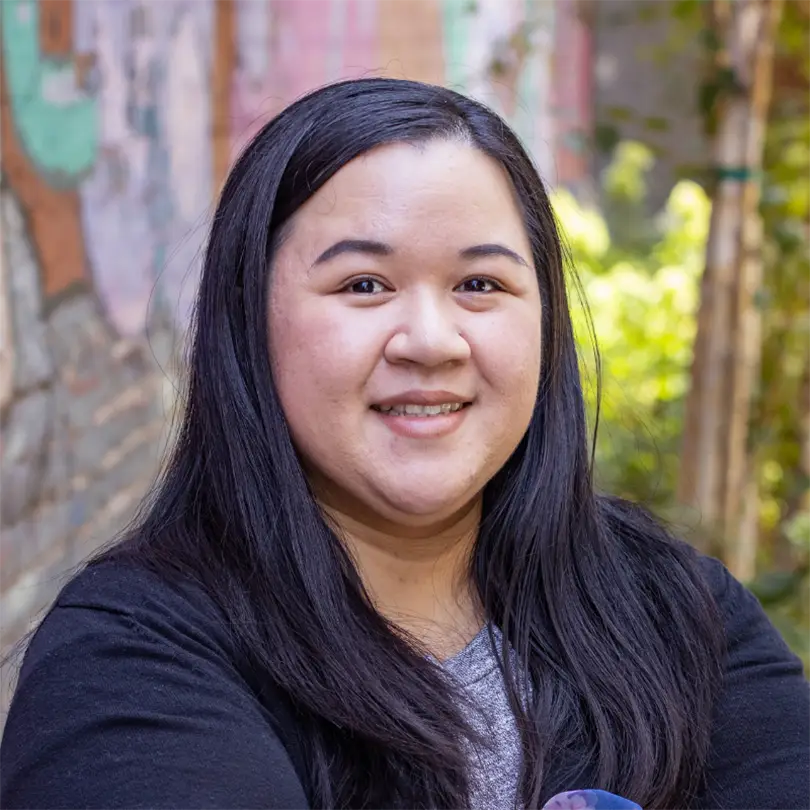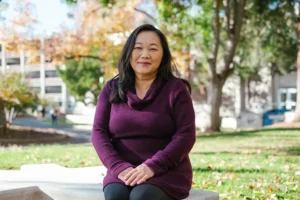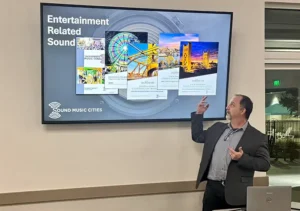Sacramento-based Valley Vision works to address social, economic and environmental health through advocacy and research. Kathy Saechou serves as a project manager at Valley Vision. She oversees the work related to the organization’s clean air and climate impact area.

An Oak Park native, Saechou is Mien American whose parents immigrated to the United States from Northern Laos in the 1980s. Saechao graduated from Sacramento State with a bachelor’s of arts in geography with a focus in metropolitan planning, and has been Valley Vision’s project manager since 2022.
Solving Sacramento spoke with Saechou about her work, how to get people to care about climate change and why being informed is key.
What made you want to go into environmental studies?
Like a lot of people, I love the outdoors. I grew up going camping every summer and fishing with my family. I really seek joy in nature, clean air and appreciate the beauty of wildlife. I come from an immigrant family. My parents immigrated here from Laos in the 1980s and my dad just loved fishing and camping.
I just want to make sure that our future generations continue to experience nature the way I have in the past and currently. I’ve always been drawn to environmental studies and climate change issues as I grew up and went to school and then continuing into my career.
Tell me about your organization and how it relates to furthering environmental justice in the Sacramento region?
Valley Vision is a civic leadership organization dedicated to improving economic wellbeing and livability for all residents in the greater Sacramento region. We’ve been doing this for over 30 years since our establishment.
In order for us to improve economic wellbeing for everyone, we have to recognize that frontline communities are the ones that are most vulnerable and overburdened by environmental and air pollution. … A lot of those frontline communities are a majority communities of color, low-income communities, non-English speaking communities and communities that are underrepresented and under-resourced. … Our organization works towards furthering [environmental justice] in Sacramento by working directly with frontline communities and finding solutions for our most pressing issues, including improving air quality and public health, which is my work background, and stewardship of our natural and human resources.
How do we get people to care about climate change?
We have to first start listening to what community members are most concerned about. It’s probably most likely not about climate change. … The first thing we need to do as environmental justice practitioners is we have to ask people what their pressing needs are in their personal lives, and if possible, find a way to connect that [in] some way to climate change and environmental justice issues. If we can connect to what’s happening locally with someone’s daily routine, it’s really the best way to get people to start thinking about climate change issues.
If you have a kid who you have to walk to school or if you have to wait at a bus stop to go to your doctor’s appointment or grocery store, climate change does affect you because extreme heat events such as hotter temperatures during the summer really impacts people — especially elderly, children, pregnant women, people with preexisting health conditions like asthma — poor air quality [and] environmental hazards really impact them the most. It does in fact result in higher living costs because they have to go to the doctor’s and hospital visits more often because of their preexisting conditions or they’re more at risk.
What do you see as the most promising solutions to addressing the issues created by climate change, and what can folks do in their everyday lives?
The most promising solution to addressing climate change and environmental justice issues for frontline communities is to continue advocating air-quality education [and] climate change education. If we can get community members to go to … events and learn about climate change issues and environmental justice issues, that’s the first start in really actualizing a solution.
From there, community members can start inviting their family members, friends and their neighbors and even teaching them about what they’ve learned. … The goal is that those community members will feel empowered and have the courage to advocate at the local level, whether it’s voting for elected officials who support climate change solutions and environmental justice or requesting their local representatives to support these solutions.
What more can you tell us about these solutions and why they offer the most potential to solve the problem?
These solutions to addressing climate change and environmental justice are dependent on education. … Building trust with community members and community organizations and also … empowering them to advocate to take the next step in protecting themselves. If community members have the awareness and they have the tools to advocate for things like environmental hazard protection and community air protection, they’re more likely to use these resources. Community members have to know where to find data and information that’s easily accessible and digestible about environmental hazards and local and regional air pollution.
What evidence exists to show the effectiveness of these solutions?
Through the passing of AB 617, legislation to advance community air protection since 2018, 19 communities in California have been invested in and empowered to improve air quality and protect public health in their communities through air quality data collection and emissions reduction strategies that community members directed and identified funding for these strategies through community air grants. This legislation was passed in 2018 and a lot of investment has been made into these communities and a lot of progress has been made as well.
This Q&A has been edited for length, clarity and flow.
This story is part of the Solving Sacramento journalism collaborative. Our partners include California Groundbreakers, Capital Public Radio, Hmong Daily News, Russian America Media, Sacramento Business Journal, Sacramento News & Review and Sacramento Observer. Support stories like these here, and sign up for our monthly newsletter.
Reported by Christa Ison, edited by Justine Chahal


















